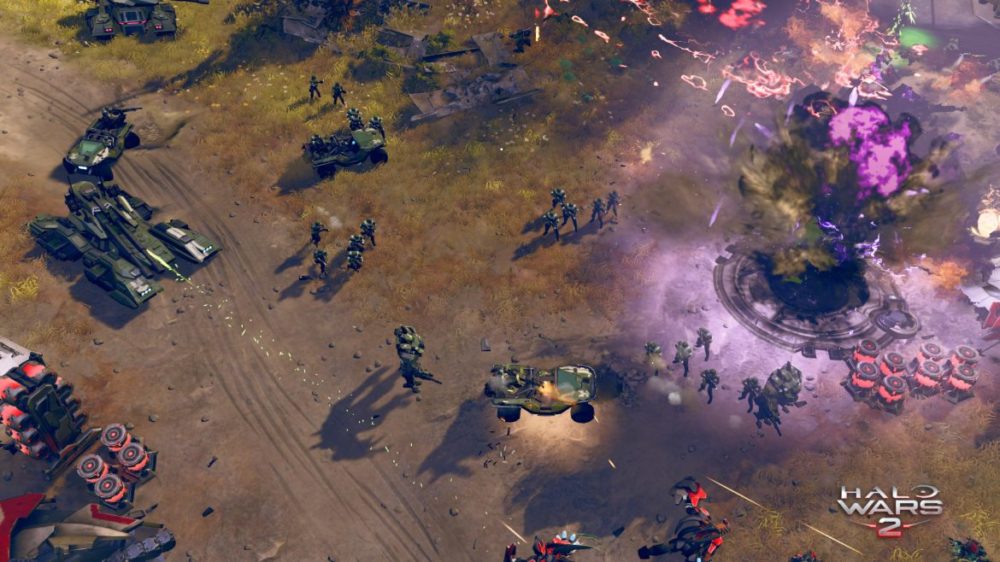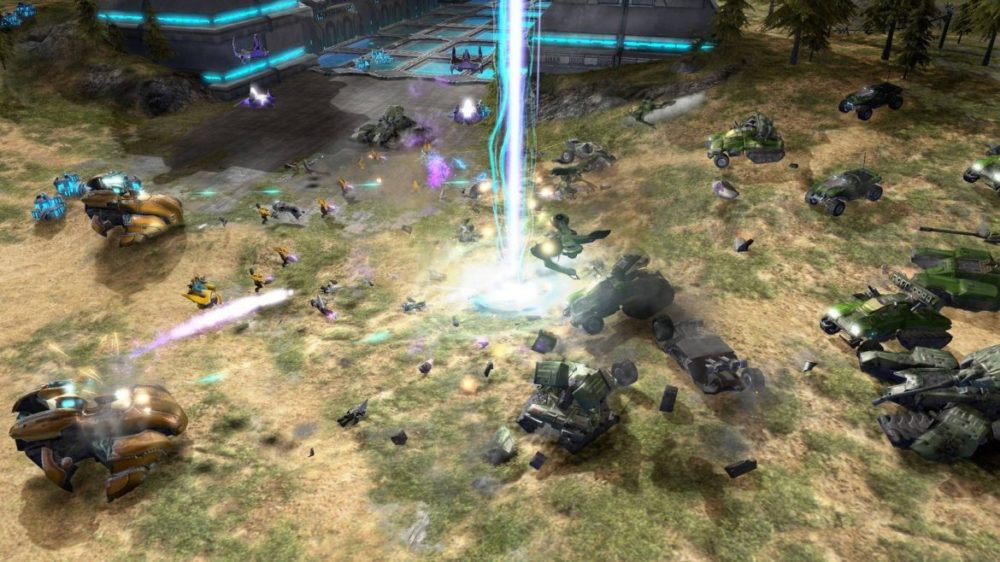TL;DR
Halo Wars 2 brings the beloved Halo universe to real-time strategy, offering a polished experience for both PC and Xbox One players. Developed by the acclaimed Creative Assembly, it boasts stunning cinematic cutscenes and a gripping narrative that expands the Halo lore, introducing formidable new Covenant enemies. While its graphics are solid rather than groundbreaking, the game prioritizes fluid gameplay and intuitive controls, even on a gamepad. Beyond a robust single-player campaign, it features multiplayer and the unique Blitz mode with card-based unit deployment. If you're a fan of RTS or the Halo franchise, dive into this exciting continuation. Read on for our full breakdown!
It has been approximately eight years since the release of Halo Wars from Microsoft and Ensemble Studios, initially for the Xbox 360. Now, it arrives on Xbox One and PC, reflecting Microsoft’s evolving strategy for its Xbox-exclusive titles. The cross-platform functionality allows gameplay on both PC and Xbox One with a single license, offering considerable convenience. This iteration is spearheaded by the strategy experts at SEGA, Creative Assembly (Total War). The central question is: what new elements does Halo Wars 2 introduce to the real-time strategy experience?
For those unfamiliar with Halo Wars, it is a real-time strategy (RTS) game set within the established Halo universe. Iconic elements such as Spartans, Ghosts, Warthogs, and Covenant forces are present. Players familiar with the RTS golden age of the 1990s (from Dune 2 to Command & Conquer) will recognize core mechanics, as will enthusiasts of e-sports titles like StarCraft. In classic RTS fashion, players construct bases, develop them with additional structures to generate resources, produce combat units, and unlock other strategic assets. Halo Wars 2 features a single-player story mode, a multiplayer mode, and a mode called Blitz, which centers on deploying units via collectible cards (obtained through gameplay or purchase) to withstand escalating waves of enemies.
The narrative is a prominent highlight of Halo Wars 2, featuring compelling references to the FPS series. Microsoft’s investment in high-quality cinematic cutscenes sets a new standard, potentially influencing industry leaders like Blizzard. The story mode unfolds in an episodic manner, often presenting players with limited unit selections or specific objectives to accomplish. While base-building, defense, and capturing strategic points remain central, the narrative effectively portrays a splinter faction of the Covenant, depicted as formidable and aggressive.
Historically, visual fidelity has not been the defining characteristic of RTS games; speed and fluidity are paramount. Halo Wars 2 emphasizes these aspects, delivering a consistently smooth frame rate. While the unit designs, explosions, and environments may not be cutting-edge, they are sufficiently detailed, enabling players to maintain situational awareness and effectively manage engagements. The gameplay quickly becomes intense and demanding.
The game incorporates an effective tutorial that is appropriately paced and rewards repeated playthroughs. The controls are designed for intuitive use, but mastering the gamepad shortcuts and commands requires practice, particularly during intense combat scenarios. This mastery is essential, as RTS games typically demand rapid decision-making and simultaneous actions. This dynamic is both the appeal and the challenge of the genre. While consoles and controllers may not offer the precision of a mouse and keyboard setup on a PC (though keyboard and mouse support is now available on Xbox One), the control scheme is functional and well-implemented. Patience and practice are necessary to internalize the controls and execute commands instinctively.
Complementing the visuals, the game features high-quality Halo-themed musical scores in the menus. The Halo franchise has successfully established a distinct universe since its inception as an FPS in the early 2000s, and it continues to expand effectively, despite the departure of original developer Bungie (who are now pursuing their own FPS franchise, Destiny, through Activision). The sound design is also commendable. In older RTS titles, repetitive unit acknowledgements could become tiresome. Halo Wars 2 features a greater variety of unit responses, enhancing immersion, humor, and overall intensity.
Overall, Halo Wars 2 is a polished and well-produced title. While the graphics may not be the most advanced in 2017, the game’s setting, presentation, and technical execution demonstrate a high level of quality. The game offers moments of excitement and engagement, and the potential for large-scale battles is promising as the player base grows. While it may not revolutionize the RTS genre, it delivers a solid experience that aligns with the standards established by Creative Assembly. Whether it achieves the same level of adoption in the e-sports scene as titles like StarCraft II remains to be seen. We anticipate further exploration of the game and upcoming DLC content included in the season pass. Notably, the Ultimate Edition of Halo Wars 2 includes an HD remake of the original Halo Wars, which may be of interest to RTS fans who missed its initial release on the Xbox 360.





